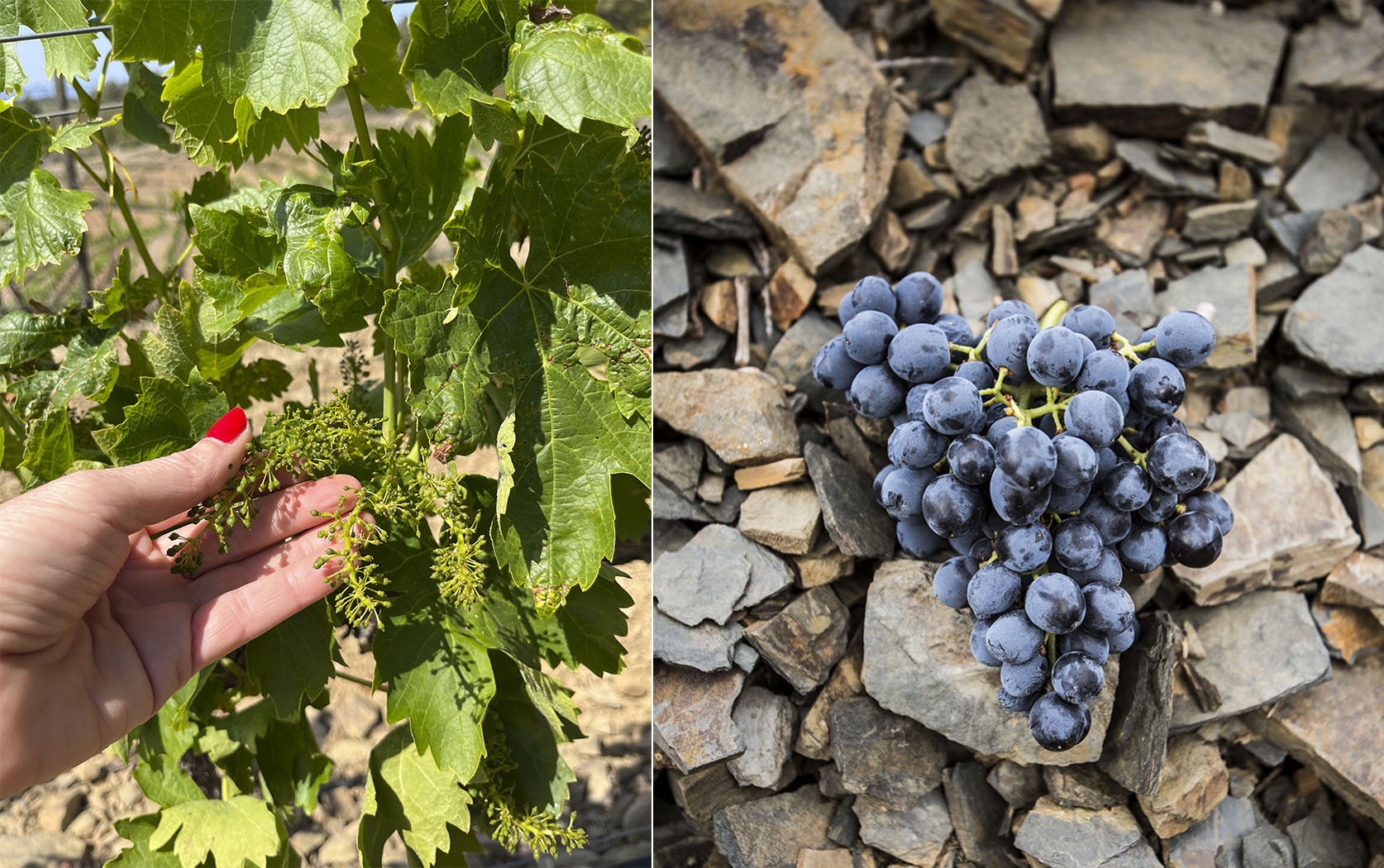Cal Grau is a boutique winery in Priorat that is part of the Iberian Vineyards Company, a project based on high-quality wines.
Iberian Vineyards: The Union of Tradition and Quality.
Indulging in good wine is a pleasure that defines luxury, and the Iberian Vineyards Company is recognized for its variety, quality, and excellence.
They have three wineries located on three estates and framed in three different Designations of Origin: Ribera del Duero, Priorat, and Toro. Very diverse among themselves, but all with a common denominator: a journey to the origins of wine, a faithful reflection of the land, the passion, and the work of historical wine regions.
Cal Grau Winery and Vineyards, in the D.O.Q. Priorat
These impressive wineries and vineyards stem from the intention to develop a small winery with its own estate in this area.
They are located in the municipality of El Molar (Tarragona), in one of the most complex orographic areas of Catalonia. It covers an area of 40 hectares, of which 22 are vineyards.

Cal Grau Winery and Vineyards, Priorat
The abrupt orogeny, with gentle and moderate slopes, the mineral-rich soil, the extreme climate, and the poor areas, favor a particular planting design and preserve the essence of the region’s vineyards.
According to Rafael Cruz, general manager of Iberian Vineyards:
We are a boutique winery where we produce
‘tasting wines’ because winemakers taste both in
the vineyard and in tanks or barrels and decide when
is the optimal time to enter the market.

From left to right: Fran Vernet, winemaker and technical director of Cal Grau, Rafael Cruz, general manager of Iberian Vineyards, Beatriz Arranz winemaker of the three wineries, and Fran Sanz, technical field manager.
The tradition and quality of their wines are based on a meticulous process where an exhaustive study of the grapes from their batches is carried out. These are processed separately in small tanks to relate the types of wines to their places of origin.

Interior de la Cava de Crianza con una pared de pizarra de fondo y barricas de madera de roble francés
Subsequently, the different types of wines are taken to the Aging Cellar (located underground) where they age separately in French wood until the moment of final blending. This is determined by the tasting of the wines and their subsequent bottling under their corresponding brand.

In the left picture: The Cariñena grapevine, has a more clustered bunch than other varieties. Right. the grape cluster on the llicorella soil, also called slate soil with a laminar structure.
The varieties are mainly Garnacha and Cariñena or Samsó, combined with others of a more universal character and more recently introduced in the area, such as Cabernet, Merlot, or Syrah.
Fran Vernet explains:
In Priorat, we seek the balance between phenolic ripeness—the ripeness of the skin—and alcohol content.
Due to the temperature, the concentration of sugars occurs faster than the ripeness of the skin, and we reach the desired alcohol content earlier. But if the skin is not yet at that point, they have to look for freshness, which is the key to keeping these wines long-lasting in the bottle

Bird’s-eye view of the terrain with llicorella soils that give Priorat wines great mineral personality.
In Priorat, there is low grape production due to its shallow soils with little organic matter. But, on the other hand, it has a high concentration, resulting in wines with a lot of color, very dense, and structured.
Rafael Cruz de Aguiar explains:
Cal Grau is a ‘heroic’ winery due to the terrestrial orography, its llicorella soils, and the scarce rainfall.
It is not a winery that practices organic viticulture, although they have natural tactics such as putting pheromones to control the grape moth. It is an ecological technique of sexual confusion, which they install in the vineyards.

In the left picture: Red ring that is installed on its branches containing pheromones that prevent the reproduction of the Lobesia Botrana (or grapevine moth), increasing the quality of the grape. Right. a magnifying glass to closely observe the growth of the clusters, in this case, of Carignan.
The Wines: La Petite Agnès, Clos Badaceli, and Les Ones
Regarding wine production, the highlights are:
“La Petite Agnès” with four months of aging in barrels and comes from their most fruity Garnacha and Cariñena vineyards;
“Clos Badaceli” and “Clos Badaceli 100% Garnacha” with 14 months of aging in new French barrels combine the concentration of their best vineyards. It also takes its name from the mountain just in front of the Winery.
“Les Ones” the wine with the lowest production of the winery, is the highest range of the winery and refers to the shape that is glimpsed in its vineyards with its curves and terraces.

Wines: La Petite Agnès, Clos Badaceli, and Les Ones
Premium and High-Quality Wines
The recent addition to the Company of Rafael Cruz de Aguiar as General Director represents the linkage of a very important piece in the Iberian machinery. It adds added value with its knowledge and experience.
For 2023, they aim to be a quality benchmark in all markets and increase the productivity of all wineries. Thus, delivering premium quality to all customers.
Undoubtedly, the Iberian Vineyards Company is a benchmark in the wine sector, and some of the factors that support it are its 22 years of tradition and the quality of its wines.
Images provided by Iberian Vineyards.





